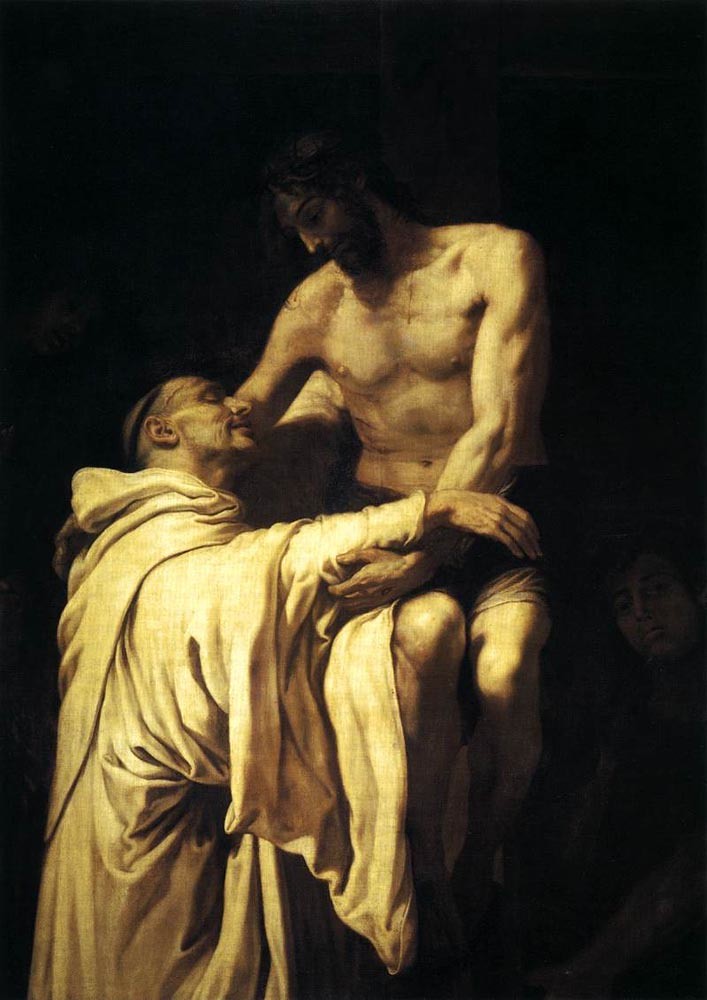According to the Catholic Calendar of Saints, today is the Saint Day of Juan de la Cruz (Spanish, 1542-1591). While I am not Catholic, the history of art has been inspired by and is inseparable from it. For several months, I have been pouring over the poems of Juan de La Cruz; drawn in by their depth and simplicity. But, also, amazed at the relationship his mystic view of the relationship of man and God was expressed in contemporary painting.

Juan was a follower of Saint Teresa of Avila (Spanish, 1515-1582). Her doctrine of a personal relationship with God, was originally considered subversive by Church authorities, who believed it circumvented the need for Church ordinances. Teresa asked Juan to help spread and establish her ideals. As a result, he was imprisioned and submitted to a regular regime of circular torture for nine months. While sitting in a windowless cell, he heard a someone singing a love song outside the prison wall. Inspired to write about his love for God, he convinced a guard to give him pen and paper. He wrote poems that, in Spain, have come to rival the reputation and insight of Shakespeare.
My favorite is titled "I Came Into the Unknown" (translated by Willis Barnstone). Below is a excerpt:
I came into the unknown
and stayed there unknowing,
rising beyond all science.
I did not know the door
but when I found the way,
unknowing where I was,
I learned enormous things,
but what I felt I cannot say,
for I remained unknowing,
rising beyond all science.
It was the perfect realm
of holiness and peace.
In deepest solitude
I found the narrow way:
a secret giving such release
that I was stunned and stammering,
rising beyond all science . . .
. . . And if you wish to hear:
the highest science leads
to an ecstatic feeling
of the most Holy Being;
and from his mercy comes his deed:
to let us stay unknowing,
rising beyond all science
Juan and Teresa's beliefs would later be accepted and incorporated into the Church's mainstream. A monument to Teresa was commissioned in Rome and executed by Giovanni Bernini (Naples, 1598-Rome, 1680)
Within Spain, other artists supported Teresa's advocacy for a closer, personal relationship with God. Perhaps my favorite work inspired hangs in the Prado Museum (above). In person, there works are intimate beyond words. They conjure feelings of awe and tenderness that border on the irreverent.
